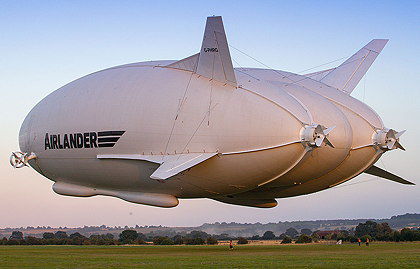- Home » News » Technology News
Project will develop electric propulsion for UK airship

The UK is leading a £1m project to develop electric propulsion technologies for aircraft, using a helium airship as the initial platform. The E-HAV1 project aims to develop a 500kW electric propulsor for the Airlander 10 airship which is being developed by Bedford-based Hybrid Air Vehicles (HAV). The intention is to replace the craft’s existing fuel-burning forward engines as the first step towards an all-electric version of the craft.
The other partners in the project are Collins Aerospace, which has an expertise in electric power systems for the aerospace and defence industries, and the University of Nottingham, which is involved in developing and testing electric propulsion systems. The project has been awarded more than £1m in grant funding by the UK Aerospace Research and Technology Programme.
Using a combination of buoyant lift from helium, aerodynamic lift, and vectored thrust, the Airlander 10 already uses much less fuel than other aircraft of a similar capability. The integration of electric propulsors is predicted to increase this advantage. The craft is aimed at a wide range of potential applications from passenger travel to fisheries protection.
“While Airlander 10 is already helping customers ‘rethink the skies’ with incredible efficiency, we have to find ways of further reducing the impact we have on our environment,” says HAV CEO, Stephen McGlennan. “This project will move us closer to our goal of zero-carbon aviation.”

The project will benefit from a £9.4m investment announced last November by the UK Research Partnership Investment Fund in the University of Nottingham’s £13.5m Research and Innovation Centre for Power Electronics and Machines, which is due to open in early 2020. The aim is for the 5,400m2 facility to become a centre of excellence in power electronics, machines and control.
Business minister Lord Henley sees the E-HAV1 project as being “a vital step … to ensure the UK remains at the forefront of hybrid-electric technology, using the best talent, industry and innovation to transform the way people, goods and services move across the UK.”





